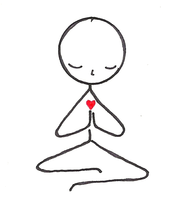|
What is mindfulness? Mindfulness, in its most clinical form, refers to a process that leads to a mental state characterized by nonjudgmental awareness of the present moment experience, including one’s sensations, thoughts, bodily states, consciousness, and the environment, while encouraging openness, curiosity, and acceptance. Jon Kabat-Zinn's definition offers a slightly different view: “Mindfulness means paying attention in a particular way; On purpose, in the present moment, and nonjudgmentally.” We could say that mindfulness is a way of being aware of the present moment in a way that connects us authentically with our mind, body and emotions; allowing us to have a greater understanding of our needs in the present moment, a more accurate interpretation of our own physical and psychological symptoms, and often an immediate reduction in distressing sensations. What does it mean to be mindful in this day and age? The practice of mindfulness has evolved from ancient meditative roots in Buddhist and yoga practices into a modern day buzzword. If you google 'mindfulness', you will come across thousands upon thousands of links to articles, pictures, interviews and research which all point to the benefits of incorporating a mindful practice into our daily lives. More and more, the medical and psychological communities are recognizing the simplicity and accessibility of mindful practice. You can find some of the most recent research outcomes here. How does mindfulness help with stress and anxiety? Mindfulness is effective because it offers a way for us to create distance between ourselves and our thoughts. Have you ever considered that you are not your thoughts? That you exist beyond the narrative that streams through your mind? When we engage in mindful practice, we are able to access the calm stillness beneath the chaos of our thoughts and emotions. It is from this place that we feel empowered, energized and focused. Evidence has shown that consistent mindful practice has and continues to offer these outcomes:
How can we incorporate mindfulness into our daily lives? Mindful practice takes many forms, and it is important that you find a practice that works well for you. It may begin in very small ways, such as practicing eating a mindful meal, or taking 3 minutes to engage in mindful breathing before you enter your workplace, or return home. It may be that you pay attention, on purpose and in a particular way while you do the dishes. There are countless ways for us to be mindful - as it is just that - a way of being, rather than a 'doing' or a 'thinking' or a 'feeling'. If this sounds vague and a bit nebulous to you, you aren't alone. An important part of mindfulness, or any meditative practice, is to develop your individual relationship with yourself in practice. Below is a simple mindful exercise that you can adapt and try out for yourself. I challenge you to try it out, taking note of your physical and emotional sensations before and after. If you would like to learn more about how mindfulness can benefit you, check out the following links or contact me and we can get started creating a personalized plan to tackle your stress. FIVE SENSES
Use this exercise to quickly ground yourself in the present when you only have a moment. The goal is to notice something that you are currently experiencing through each of your senses. What are 5 things you can see? Look around you and notice 5 things you hadn’t noticed before. Maybe a pattern on a wall, light reflecting from a surface, or a knick-knack in the corner of a room. What are 4 things you can feel? Maybe you can feel the pressure of your feet on the floor, your shirt resting on your shoulders, or the temperature on your skin. Pick up an object and notice its texture. What are 3 things you can hear? Notice all the background sounds you had been filtering out, such as an air-conditioning, birds chirping, or cars on a distant street. What are 2 things you can smell? Maybe you can smell flowers, coffee, or freshly cut grass. It doesn’t have to be a nice smell either: maybe there’s an overflowing trash can or sewer. What is 1 thing you can taste? Pop a piece of gum in your mouth, sip a drink, eat a snack if you have one, or simply notice how your mouth tastes. “Taste” the air to see how it feels on your tongue. The numbers for each sense are only a guideline. Feel free to do more or less of each. Also, try this exercise while doing an activity like washing dishes, listening to music, or going for a walk.
1 Comment
|
AuthorWrite something about yourself. No need to be fancy, just an overview. ArchivesCategories |
get in touch |
about me |
rates for services |

 RSS Feed
RSS Feed
